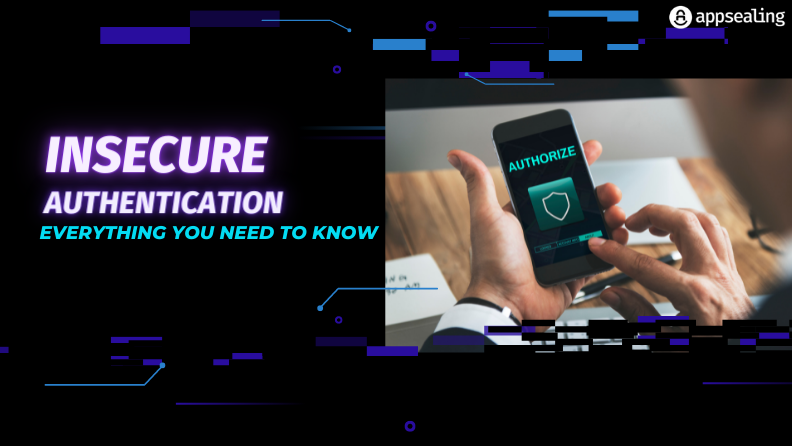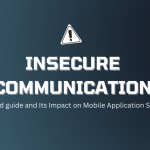Insecure Authentication has been listed as the fourth most exploited mobile app vulnerability in mobile applications by the Open Web Application Security Project – OWASP Mobile Top 10.
If you are curious about some of the other vulnerabilities listed on the Open Web Application Security Project, such as the first three vulnerabilities, they are:
- Improper platform usage
- Insecure data storage
- Insecure communication
Mobile application developers can be something other than cybersecurity experts. However, they should avoid insecure authentication designs.
Secure Mobile Applications are essential as smartphones are linked to almost every facet of our daily lives, such as our financials, sensitive personal details, location, and private media. As mentioned earlier, any vulnerability in these areas can give threat agents free rein to access and misuse the sensitive data mentioned above.
Ready to protect your app?
Start 30-days FREE TRIAL. No credit card required. Deliver Secure Mobile Apps Faster in minutes with the leader in application security.

Insecure Authentication
Insecure authentication results from implementing weak authentication practices in mobile application development. Simply put, Insecure Authentication arises from failing to confirm a user’s identity, thus allowing an attacker to acquire privileges to access sensitive data in your application.
This could result from ineffective password policies due to the following:
- Mobile applications’ useability requirements
- Simple 4-digit pins that almost all mobile devices use today
- Biometric security, such as Face ID
Security lapses can also arise due to developers taking a few things for granted during the application development process.
Take this scenario: Developers anticipate that only authorized users will be able to see the existence of a specific function on their mobile app. As a result, they predict that only legitimately authorised users will be able to request the service from their mobile devices.
The backend code that processes the request does not attempt to validate that the identity associated with the request is authorised to perform the service. As a result, adversaries can perform remote administrative functions with relatively low-privilege user accounts.
The Risks of Insecure Authentication
Native, web-based, and hybrid mobile applications use different authentication methods. Native apps rely primarily on mobile device-based security features such as four or six-digit pins and biometrics, which are less secure than you think.
Web-based or hybrid mobile application authentication can be based on a client-server model and authenticated in real-time with the backend server.
A few instances where mobile applications may be vulnerable to insecure Authentication are:
- Implementation of a weak-password policy to access mobile applications
- Not-so-secure biometric features such as Face ID or Touch ID
- When login credentials are stored unencrypted on the local device
- If a security flaw allows requests to the backend without the need for an access token
As a mobile development firm, the impact of poor Authentication in any mobile application usually centres around information theft and unauthorized access to sensitive data.
This unwanted access to secure information can damage the concerned person or organization’s reputation and lead to potentially expensive lawsuits.
Am I Vulnerable To Insecure Authentication?
Insecure Authentication can affect a mobile app in a variety of ways, a few of them are:
- If a Mobile Application uses a weak password policy and only requires a simple 4-digit pin or a simple short password as its primary Authentication
- If a Mobile Application solely relies on biometric Authentication such as Face ID or Touch ID
- If a Mobile Application store passwords locally on the device
- If the application can execute a backend API service without providing an access token
How To Prevent Insecure Authentication in Mobile Applications?
Mobile app vulnerability, especially in the context of insecure Authentication, can be eliminated or reduced by a straightforward policy of not following poor design patterns during development and re-enforcing Authentication wherever possible.
Here are a few things to keep in mind during your design and developmental process of mobile applications:
- Please work with the assumption that all authentication and authorization controls can be bypassed and re-enforce them on the server side wherever possible
- If due to offline usage requirements, a mobile application is required to perform local authorization and authentication checks, developers should implement local integrity checks within the code to detect and prevent unauthorized code changes
- Do not allow users to enter 4-digit pins as passwords
- Any spoof-able values, such as device identifiers or geo-location, should not be used to authenticate users
- Never store passwords on the local device. Always try to implement all authentication requests on the server side. The principle should also be applied to the app data. Application data should only be loaded onto the device until successful client-side Authentication
- If the application design calls for offline use and requires data to be stored on the device, the data should be encrypted, and the encryption key should be securely derived from the user’s login credentials
- If a web application is being ported to a mobile platform, the authentication parameters should be the same as that of the web application
Final Thoughts
At this point, you should understand the various vulnerabilities resulting from insecure authentication mechanisms and how they can be exploited to compromise the security of mobile applications.
Unlike desktop or web applications that only have keying material at rest, mobile applications sometimes have sensitive information stored locally. Hence when developing mobile applications as a mobile developer, you need to ensure the authentication mechanism is as secure as possible.
Ready to protect your app?
Start 30-days FREE TRIAL. No credit card required. Deliver Secure Mobile Apps Faster in minutes with the leader in application security.







